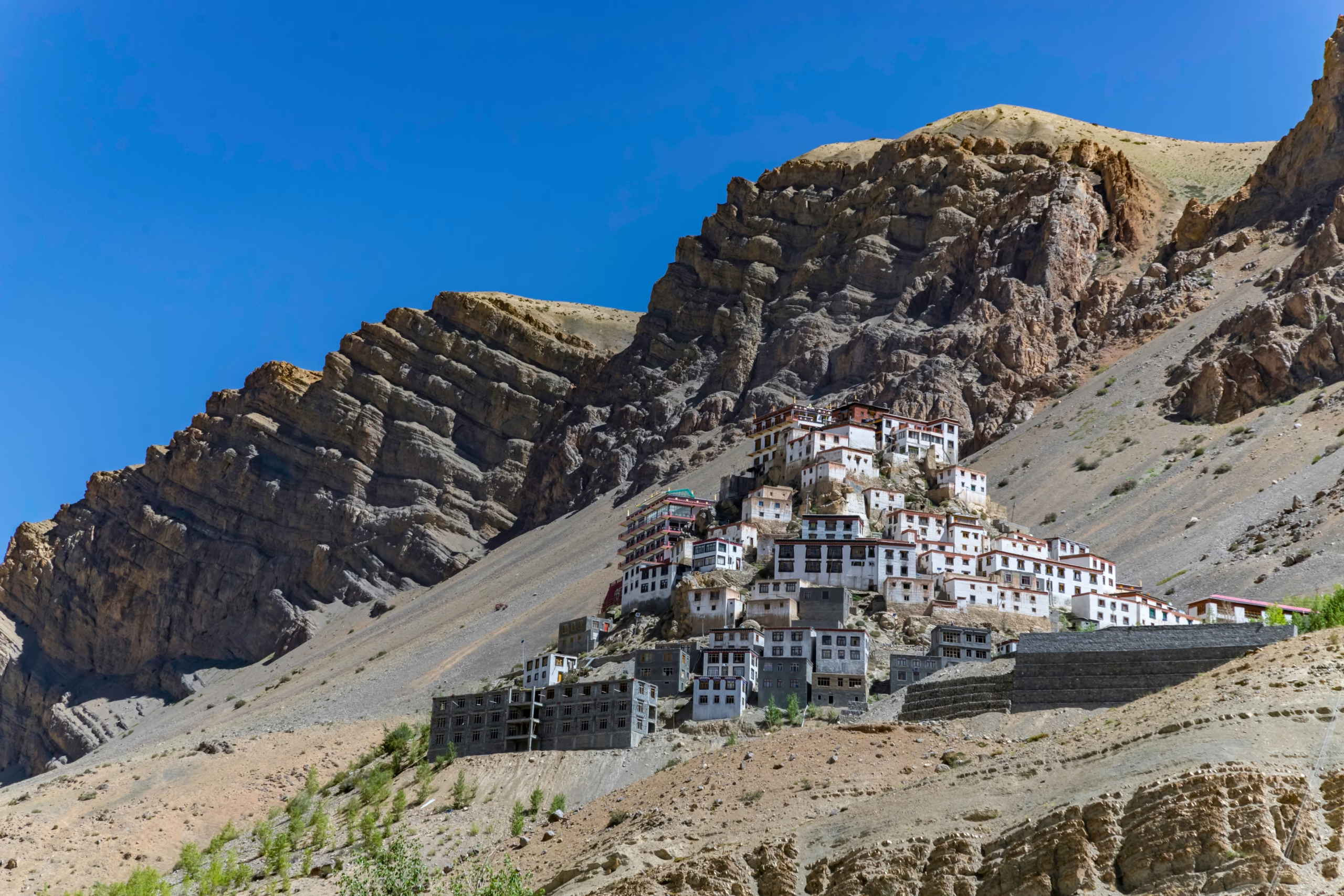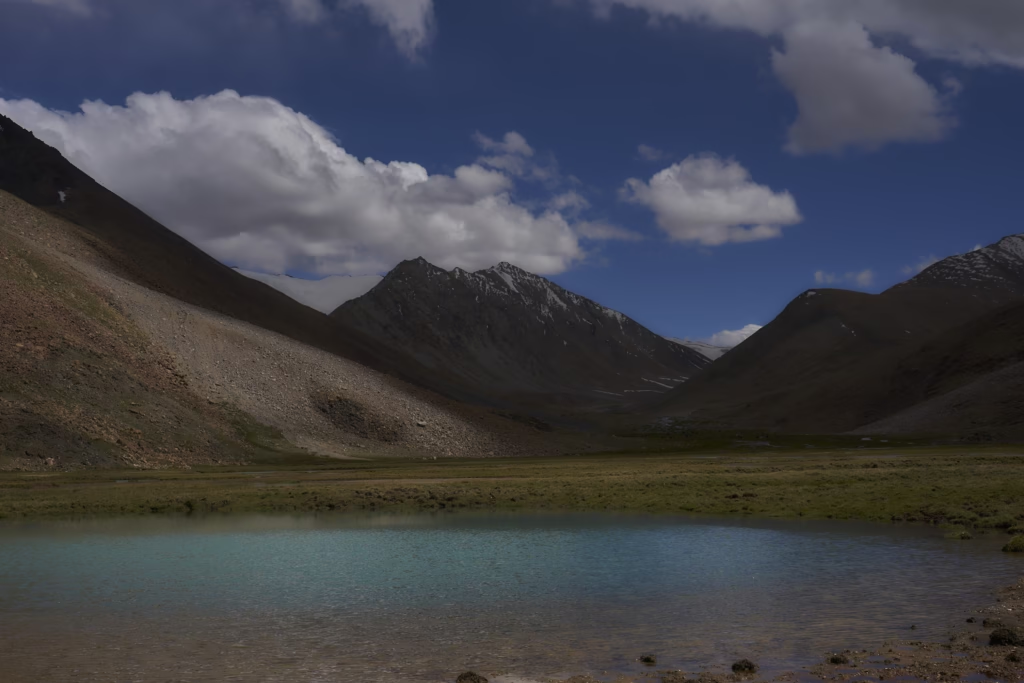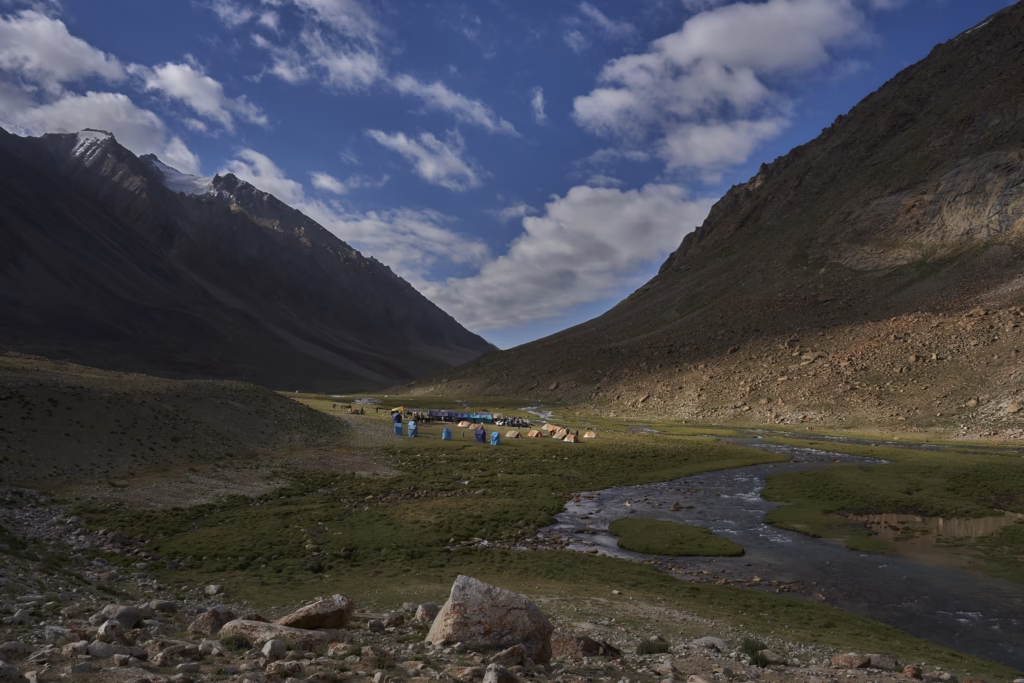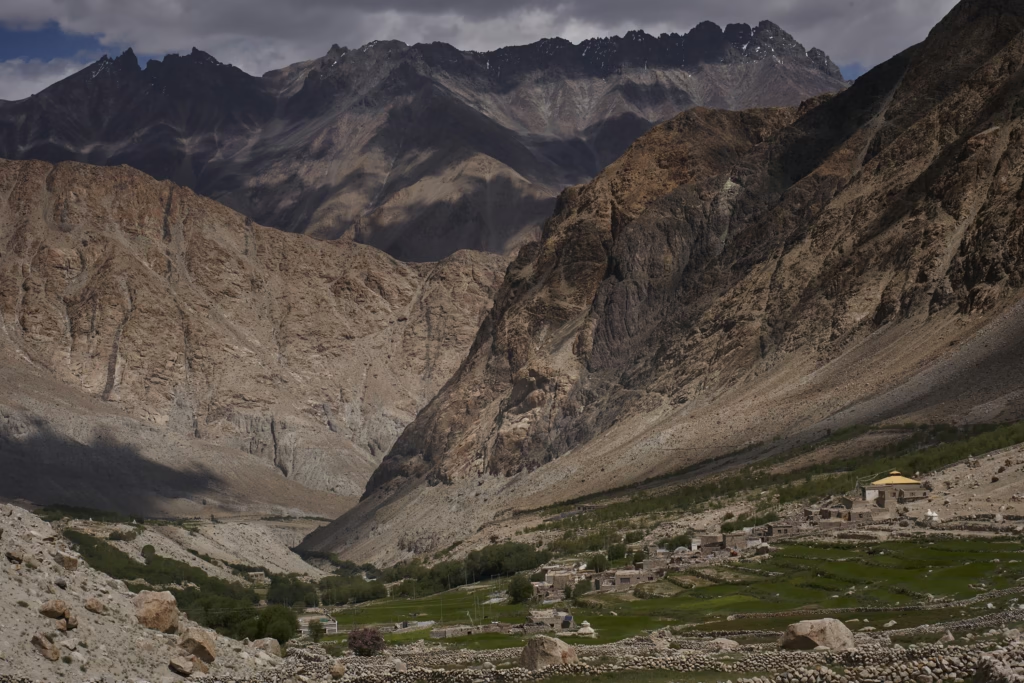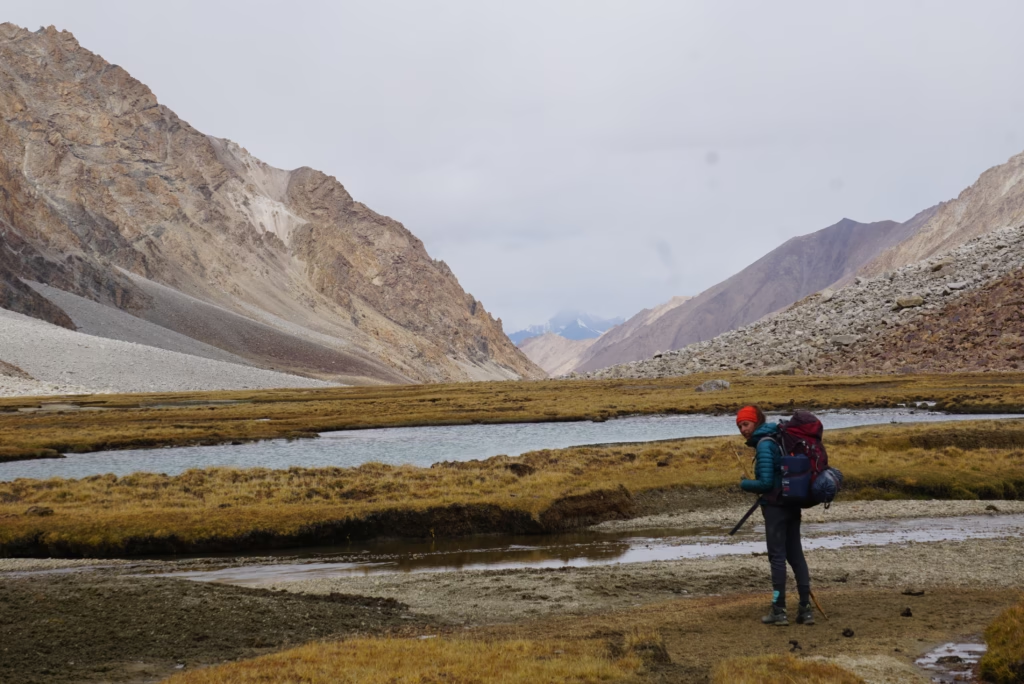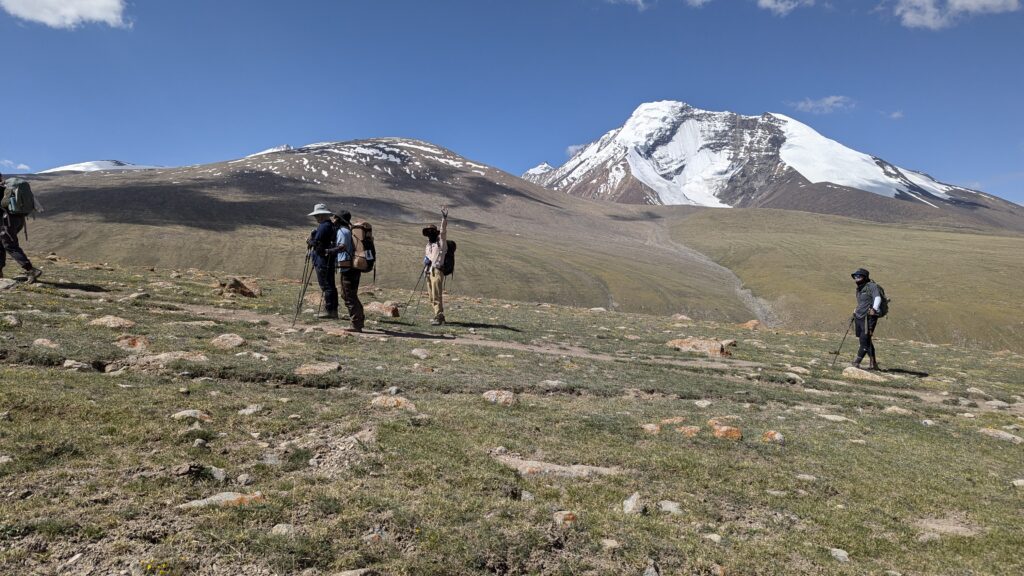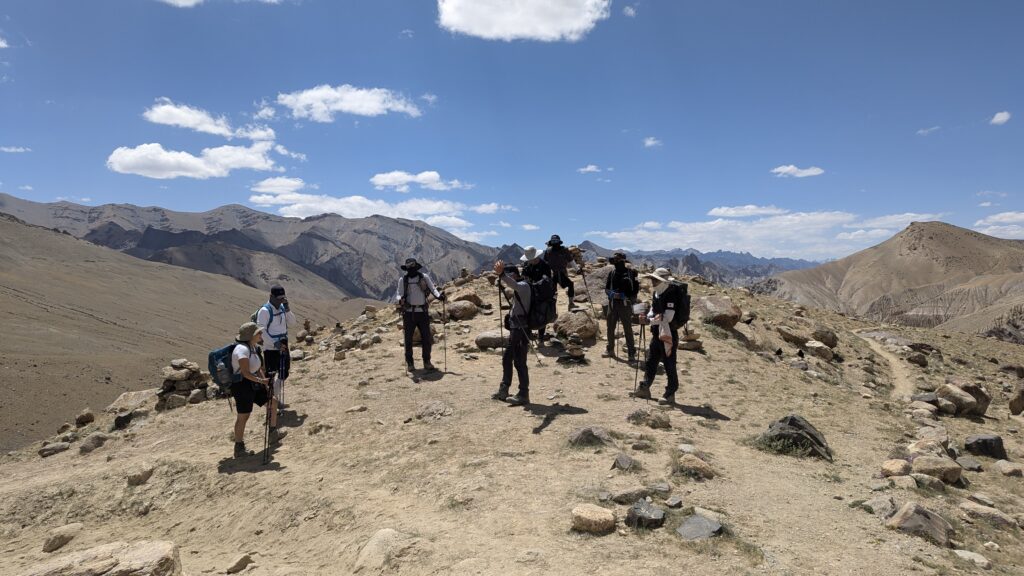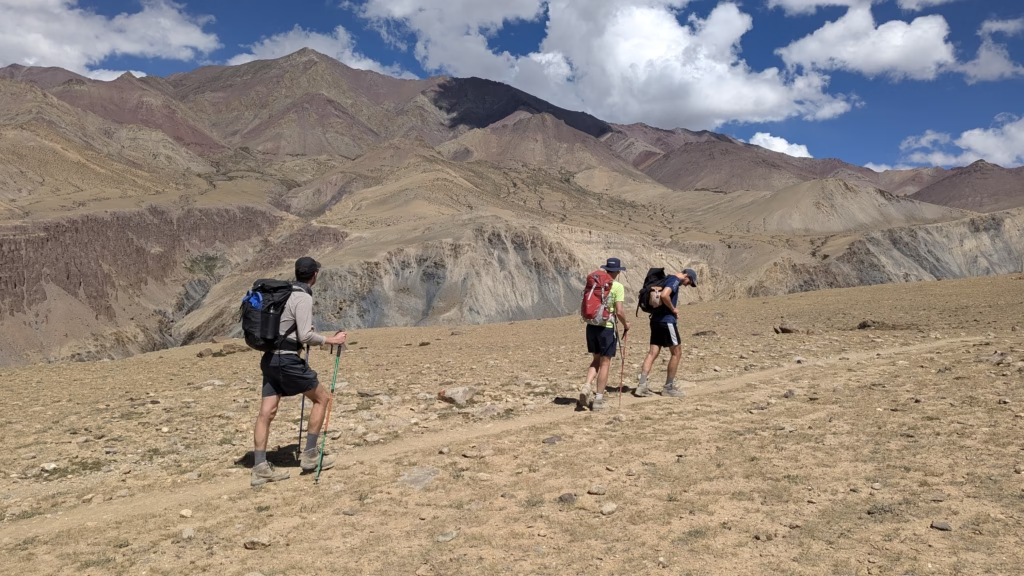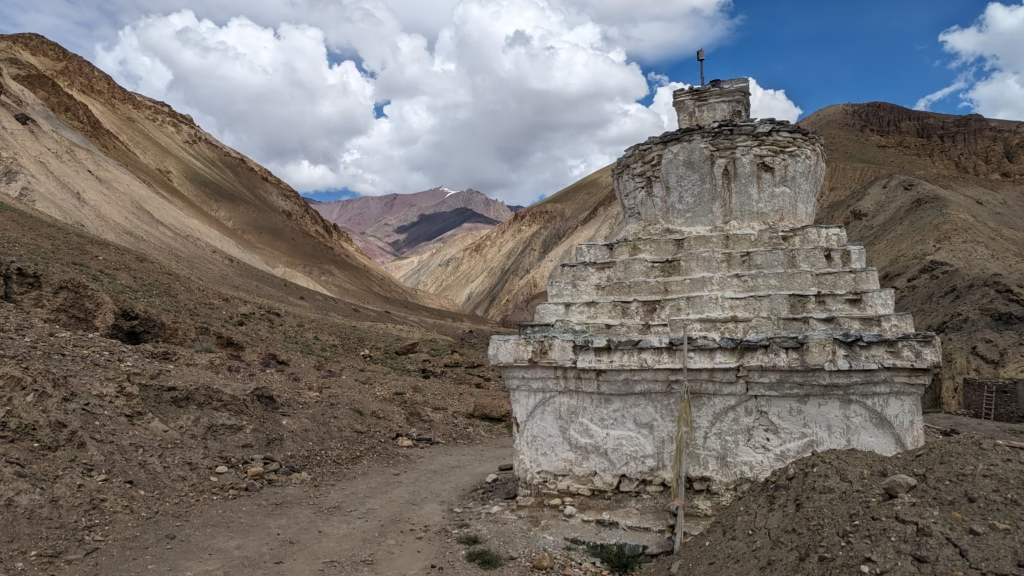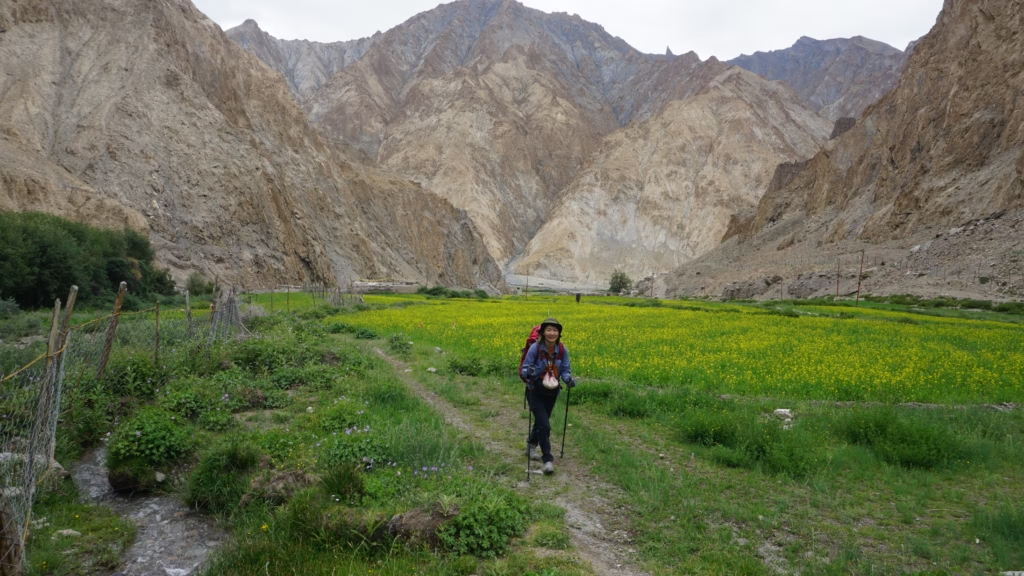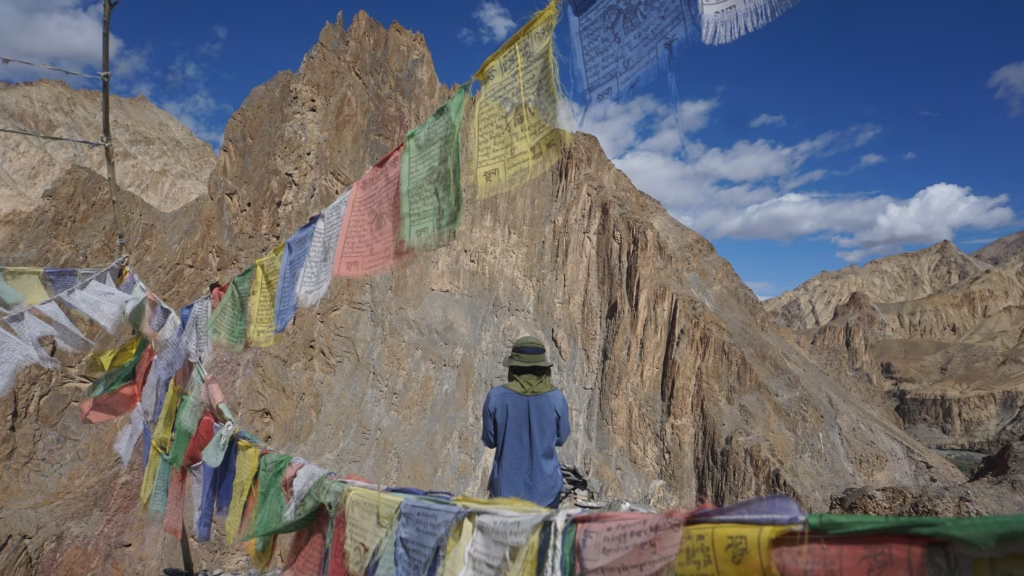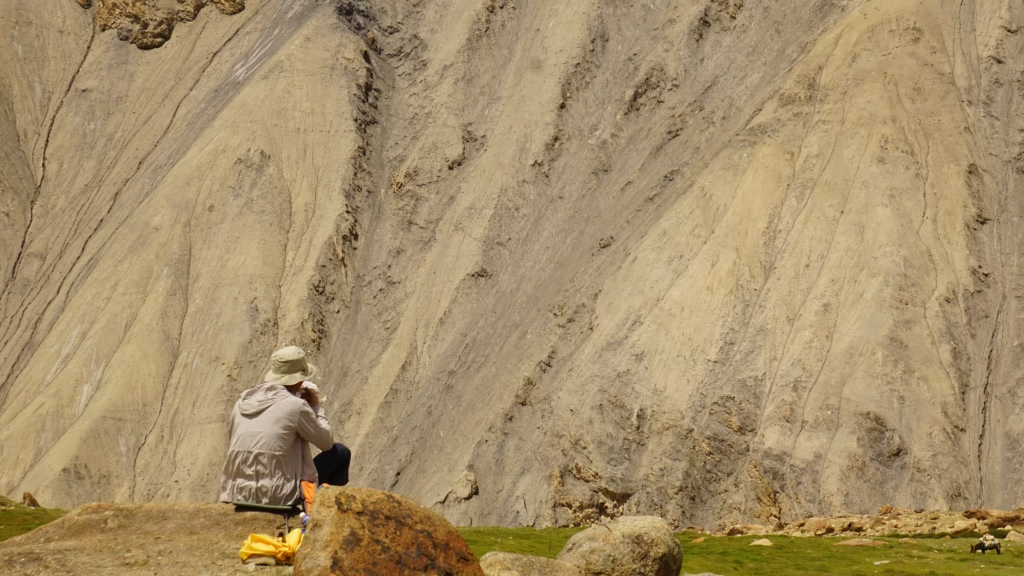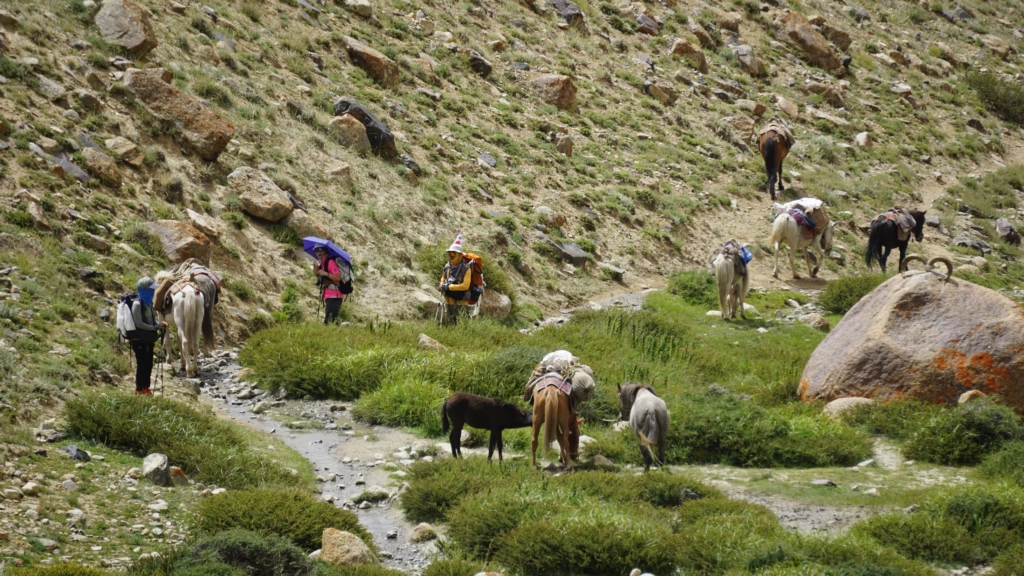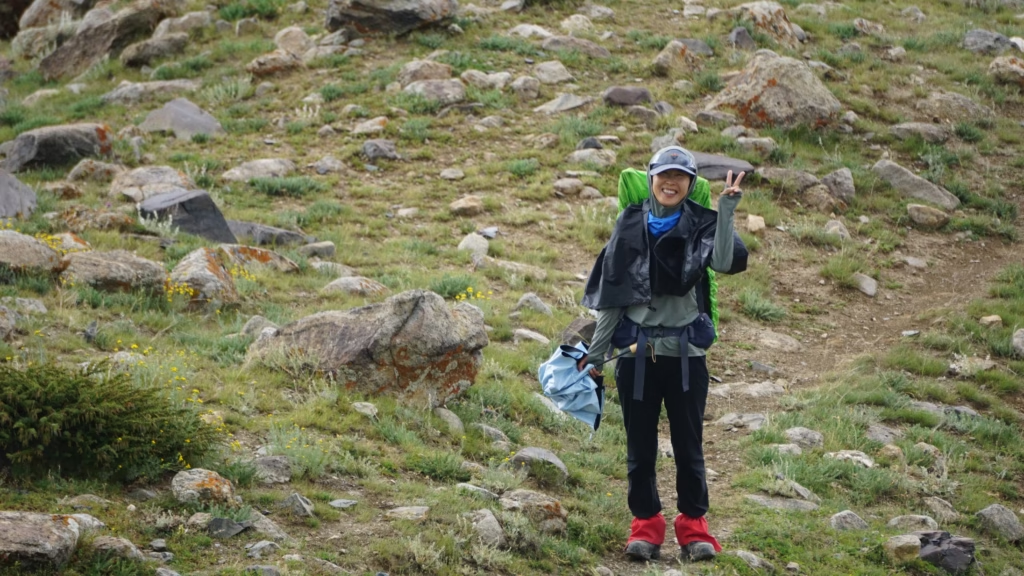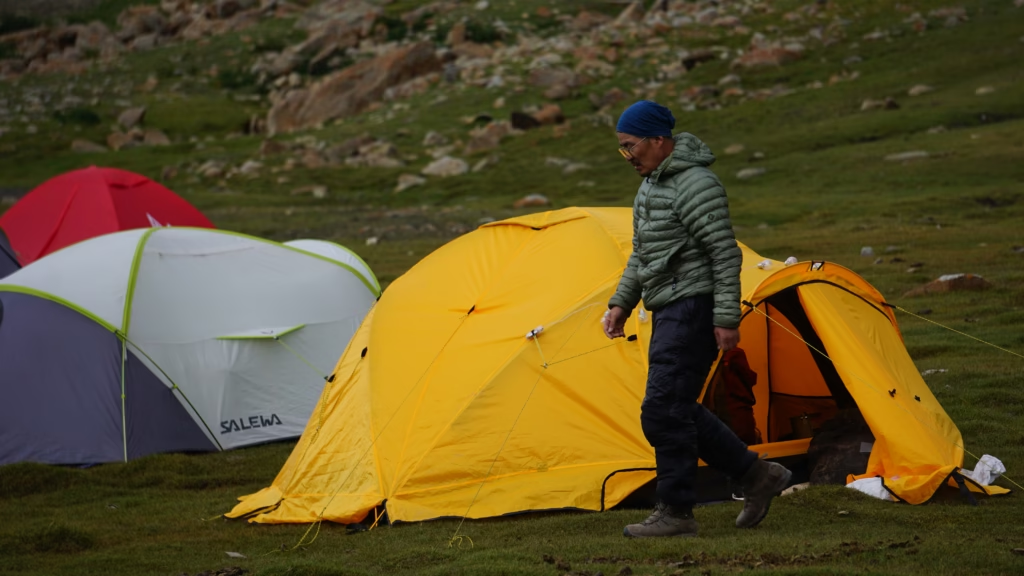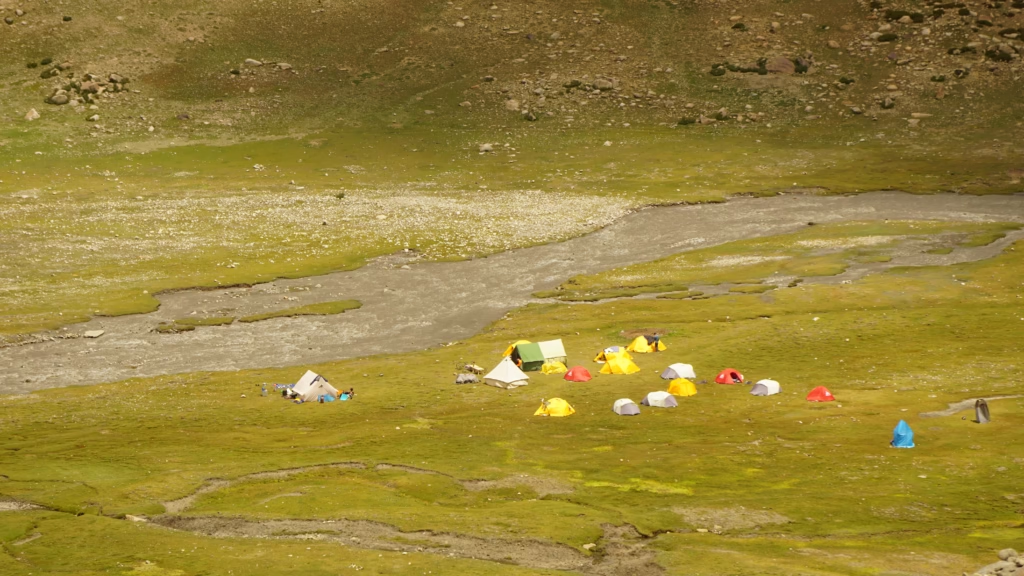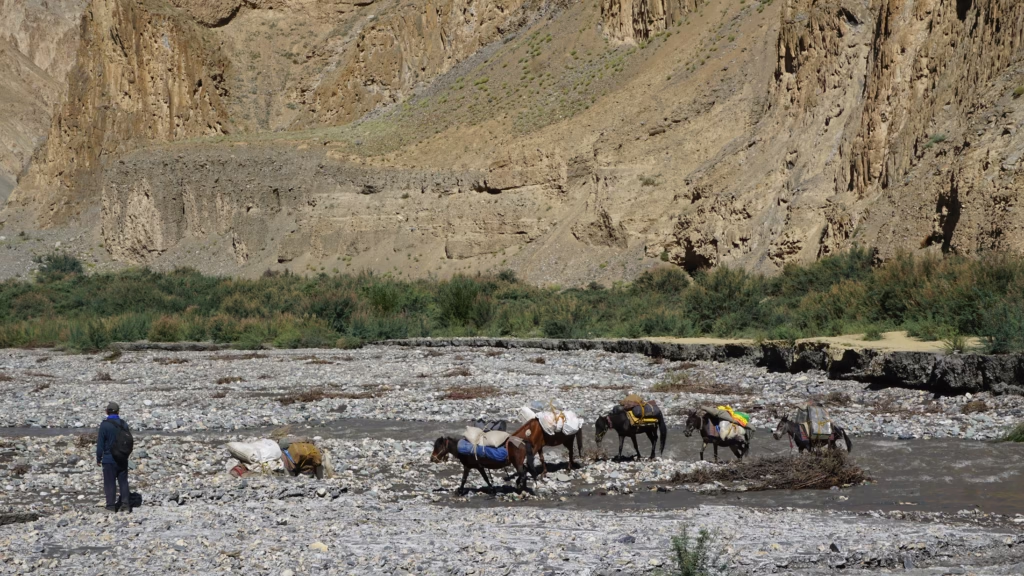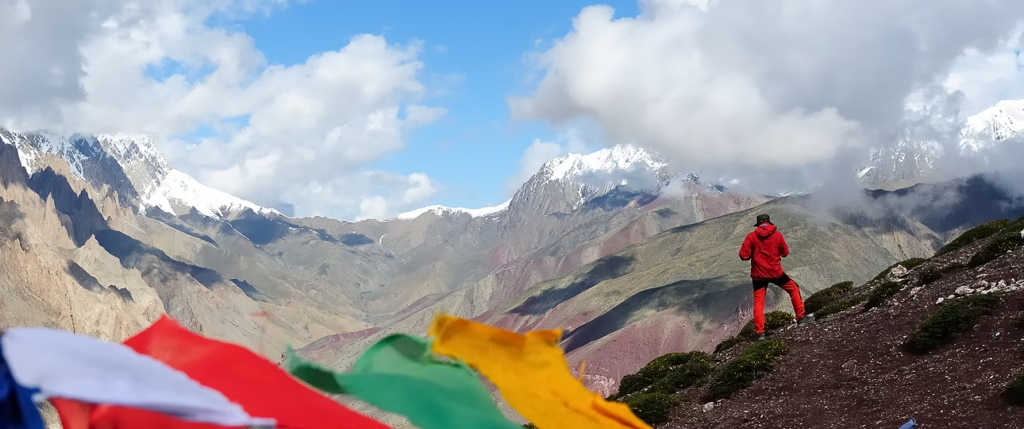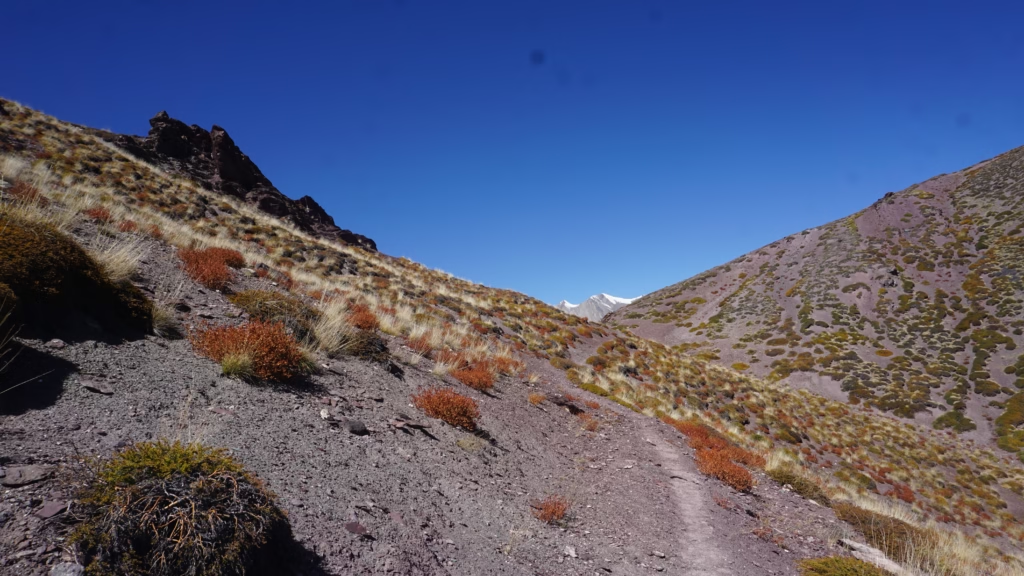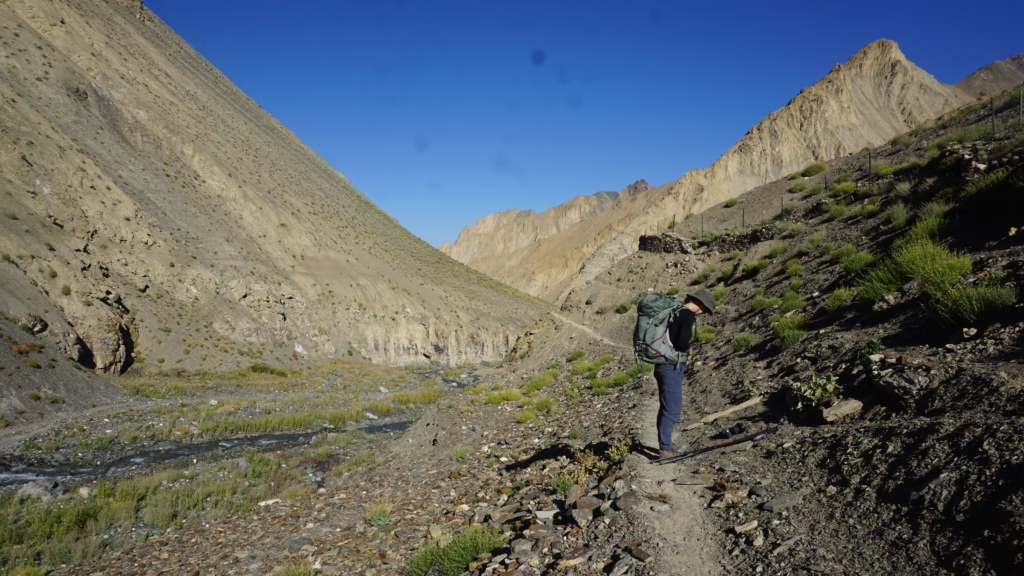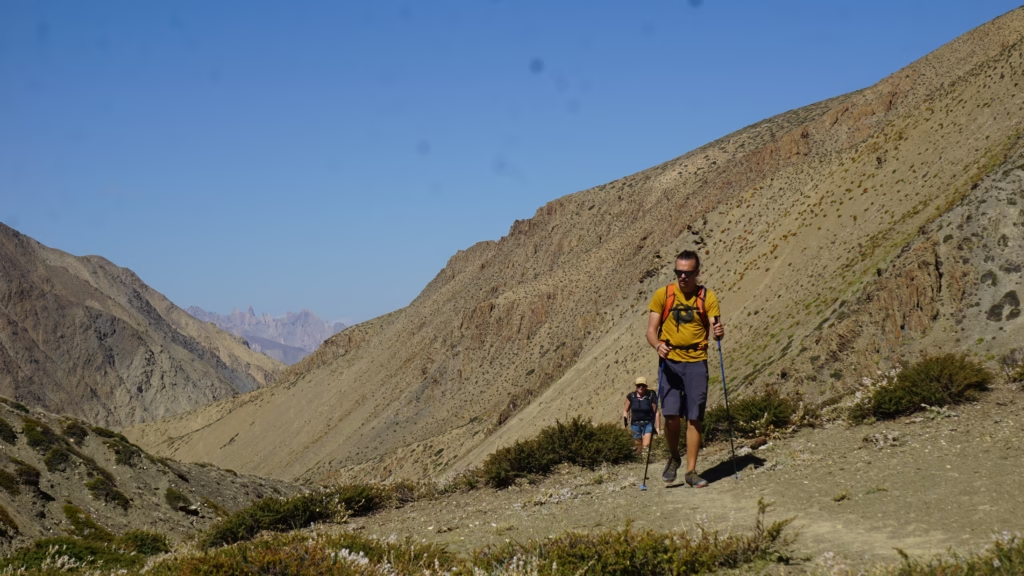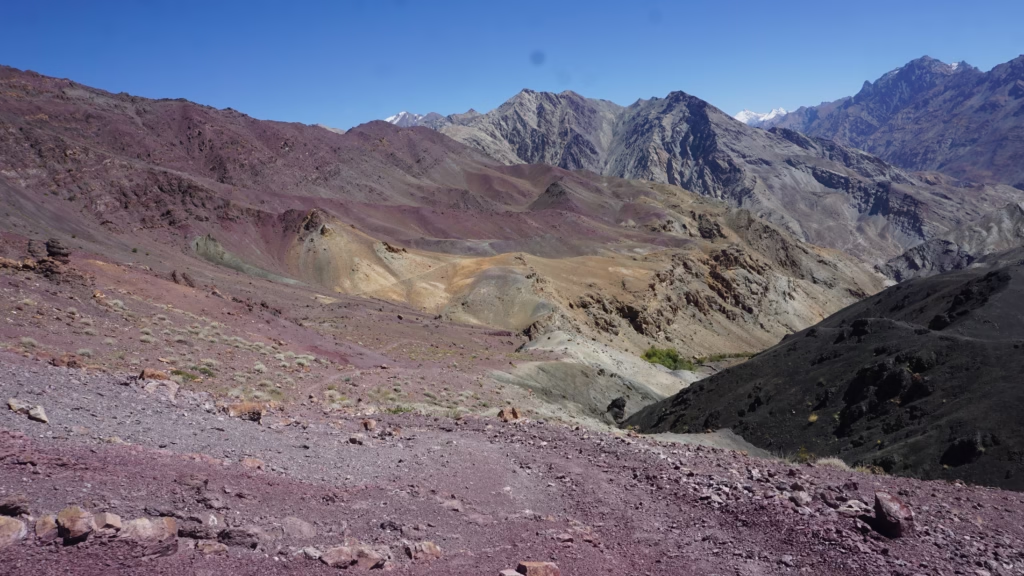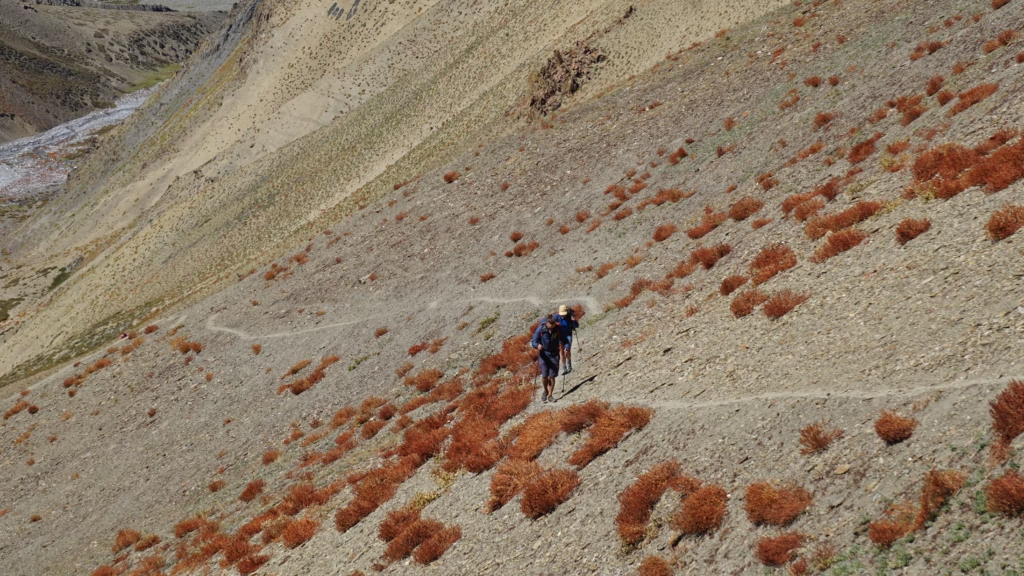Kinnaur and Spiti Valley, located in Himachal Pradesh, are known for their stunning landscapes.
Kinnaur and Spiti Valley Overview
This stunning road trip takes you through some of the most beautiful landscapes of Himachal Pradesh, blending lush valleys, remote villages, and high-altitude desert terrain.
From Shimla, the journey moves to Sarahan, home to the famous Bhimakali Temple, and then to Sangla, a picturesque valley known for its apple orchards and wooden houses. Kalpa offers mesmerizing views of the Kinner Kailash range before heading to Nako, a serene village by a beautiful high-altitude lake.
The route then enters Spiti Valley, beginning with Tabo, home to a 1,000-year-old monastery. From there, you reach Kaza, the heart of Spiti, and explore the high-altitude villages of Langza, Komic (one of the highest motorable villages), and Demul, known for its rich Buddhist culture. Dhankar, with its clifftop monastery, offers panoramic views of the valley.
The journey continues through Chandratal Lake, a stunning crescent-shaped lake, before ending in Manali, completing an unforgettable adventure through some of India’s most spectacular mountain landscapes. This circuit is perfect for nature lovers, adventure seekers, and those looking to experience the raw beauty and culture of the Himalayas.
Kinnaur and Spiti Valley Itinerary
Travel by surface from Shimla to Sangla on the Hindustan Tibet Road route crossing Kufri, Narkanda, Rampur, and visiting Bhimakali temple at Sarahan.
From Sarahan your journey takes you to Sangla (Kinnaur) through the Baspa Valley, offering breathtaking views of the gorges of the Greater Himalayas. You will be stopping en route at Karchham, where the Baspa River joins the Sutlej River from the south. 18 km from here brings you to Sangla, where you check in to your camp.
In the evening you get to move around Sangla for bird watching and as well as to explore the beautiful surroundings around this place.
Today you will enjoy a day trip to Rakcham & Chitkul.
Rakchham is situated on the banks of the Baspa River, at an altitude of 2900 M, and is famous for its scenic beauty. It is about 13 km from Sangla on the way to Chitkul (3450 M). The last and the highest village in the Baspa Valley, Chitkul, 28 km from Sangla, is noted for its alpine meadows and views of the snow-capped peaks. Looming above the village is the impressive Mt. Kinner Kailash (6050 M).
You have an early morning start and first stop at Kamru Fort on your way to Kalpa. This castle is situated at an altitude of about 2500 M in the heart of scenic Baspa Valley. The castle has a distinctive type of temple architecture with a tower that served as the residence for the Thakur and also housed the clan deity of the ruling house. Also stop at Recong Peo, the current capital and the headquarters of Kinnaur District. Visit the recently built Gompa here where His Holiness the Dalai Lama conducted a ‘Kalchakra’ ceremony in 1992.
You will arrive in Kalpa in the afternoon and after lunch, the day is free to walk around this old and delightful village.
Overnight stay at hotel.
As you continue on your Jeep Safari towards Spiti Valley, you experience Timberline -- a line beyond which forests do not grow. The barren and rugged brown mountains start from Jangi, which gets more rugged and barren after Puh (2837 M). Your drive continues along the Sutlej River until you reach Khab (2831 M), the confluence of Rivers Sutlej and Spiti where you halt for a picnic lunch amidst picturesque surroundings. A direct climb up takes you to Nako. Here there are four Buddhist temples with stucco images and murals and a rock has imprints of Guru Padmasambhava. Also, visit Nako Lake where you will see many ancient Chortens.
Continue your drive towards Tabo, the largest monastic complex in Spiti. En route, you cross the highest altitude of the day’s drive at Chango (3658 M). Tabo Gompa is a world heritage site of UNESCO. The mountains here are devoid of any vegetation due to erosion by wind, rain,n, and snow over thousands of years.
After lunch climb up to Tabo village. Built around the year 996 A.D., the Chos Khor Monastery at Tabo is the largest monastery in Spiti and one of the few remaining examples of the ‘Golden Period of Buddhist Culture in the Himalayan Region’. The wall frescos of the monastery are comparable in their antiquity and quality to those of the Ajanta caves; hence they are called the ‘Ajanta of the Himalayas’. It houses more than 100 lamas (monks), a large number of scriptures and pieces of art, wall paintings, tankhas, and stucco.
Stay overnight at the hotel.
The drive from Tabo to Kaza is along the Spiti River; en route, you will be visiting Dhankar Gompa. This Gompa rests high over the valley and is a stupendous example of local architecture. It is said to have been a fort and was also the residence of the ruler of Spiti – the Nano.
You will arrive at Kaza in the afternoon and check-in at your hotel.
Morning visit the Ki monastery. Ki Monastery is located just 12 Km from Kaza. It is close to the Spiti River, positioned between Kaza and a small village called Kibber, in the Lahaul and Spiti districts. It is one of the biggest Buddhist monasteries in the Spiti Valley and is a training center for Lamas. It was founded in the 11th century and is known to have 100 monks in its training since 1855. It is a good standing example of the architectural style of the 14th century, depicting Chinese influence.
It’s partially because of the style of architecture, and its position on the hilltop along with the repeated restoring and reconstruction of the monastery that Ki Monastery gets a fort-like facade with temples built one on top of the other. The walls of the monastery are covered in paintings and murals. The monastery houses murals, various ancient books of aesthetic value, and several Buddha idols and images in the position of ‘Dhyana’ - meditation.
Also visit the small gompa at Kibber, 9 km further ahead. Kibber at 4205 m has the distinction of being the highest permanently inhabited village in the region. Later we ride back to Kaza town and explore the market.
Morning drive to Langza from where you will start your trek.
Begin your first day of the trek. We climb the hill around Langza along the road that goes to Komic. The trail gradually ascends before flattening out. A short descent from here will take you to Hikkim, the first village you’ll see on the trail.
Visit the highest post office in the world and post postcards to your friends and family. From here Komic is 2 Km away. After reaching the homestay in Komic visit the two monasteries atop and enjoy a refreshing cup of seabuckthorn tea at the organic restaurant.
Langza along the road that goes to Komic. The trail gradually ascends before flattening out. A short descent from here will take you to Hikkim, the first village you’ll see on the trail.
Overnight in homestay.
A long day of trek awaits over the undulating hills. The trail from Komic immediately climbs up to the little pass ahead. You’ll cover long distances over this terrain, on the way you may find several domestic yaks grazing over the meadows. After around 6 hrs of trekking under the scorching sun, you’ll find a little village ahead with vast green cultivation fields in the depression between the mountains this is Demul. Relax in the homestays or take walks amidst the fields.
Overnight in homestay.
It’s down to the Lingti Gorge from Demul. The trail leaves the high plateau of Demul and starts climbing down immediately through a series of switchbacks. The loss in altitude is significant as you climb down almost 1000m down to the bottom of the gorge. The river in the gorge is called Lingti. From here the trail climbs up again for another 400m gain in altitude till you reach the village of Lhalung. Visit the 1020-year-old Serkhong Gompa or The Golden Temple with its beautifully painted golden roof shining among the dry mountains of Spiti.
Overnight in homestay.
Easiest day of the trek, the trail is mostly along the asphalted road for 3 hours till you reach Dhankar but not without the grand views of Spiti Valley. Halfway through the trail, you can see the Demul village high above on the opposite side of the valley. As you get closer to Dhankar you’ll leave Lingti gorge behind. The view of the confluence of Spiti and Pin rivers far below is a sight to behold. One can trek to the Dhankar Lake situated above the village. This is a small yet beautiful lake situated in the depression between the mountains is fed by melt water from snow. The trek completes after you return from the lake and we drive back to Kaza.
Before driving to Kaza for the evening, you'll stop at Mudh Settlement, the valley's final village, and Khungri monastery.
Overnight stay at hotel.
Morning drive your bikes to Chander Tal. At an altitude of 4300 meters and 6 Km from the Kunzum Pass in the Lahaul and Spiti district that connects Spiti Chander Tal Lake and Lahaul areas. Surrounded by snows and acres of scree, this deep blue water lake has a circumference of 2.5 Km.
En route cross some beautiful villages of Spiti Valley Morang, Hall, Pangmo Losar, and Kunzum Pass. Situated at a height of 4551 m above mean sea level, Kunzum La or Kunzum Pass is the gateway to Lahaul and Spiti Valley. It is one of India’s highest motorable mountain passes located in Himachal Pradesh. Kunzum pass separates Spiti and Lahaul Valley. It is situated at a higher altitude than Rohtang Pass. At an elevation of 13,054 ft, Rohtang Pass also serves as the gateway to Lahaul and Spiti valleys. Kunzum Pass is popular with tourists visiting Lahaul, Spiti, and Manali. It offers spectacular views of the Bara-Sigri glacier, the second-longest glacier in the world.
Kunzum Devi Temple is also popular for those passing through Kunzum Pass. As per a local tradition, all vehicles stop at the temple to pay obeisance to the deity.
Upon arrival in Chander Tal, check in to camp. Stay overnight at camp.
Morning drive to Manali via Gramphu, Khoksar, and Atal Tunnel (the World’s highest tunnel above 10000ft). The journey from Chandratal to Manali promises an unforgettable experience. Enjoy the drive and soak in the natural beauty of Himachal Pradesh!
Manali is situated near the end of the valley on the national highway leading to Leh. The landscape here is breathtaking. One sees well-defined snow-capped peaks, and the Beas River with its clear waters meanders through the town. On the other side are deodar and pine trees, tiny fields, and fruit orchards.
Afternoon is at your disposal to explore downtown. Manali is famous for apple orchards, its old wooden temples, and its folk music and dance.
Includes/Excludes
Includes
- Accommodation in the mentioned/similar hotels as per the above list in Double/Twin Sharing rooms on half board basis (Room + breakfast + Dinner)
- Accommodation during the trek on full board basis (Room + Breakfast + Lunch + Dinner) in Komic, Demul & Lhalung
- Number of meals would be equal to number of nights
- Arrival/Departure transfers, all drives and sightseeing as per the itinerary using 01 Toyota Innova Car
- Entrances to places of visit
- Inner line permit for 02 pax
- Services of an Accompanied English-speaking guide from Shimla till Manali.
- Accompanied English speaking guide from Shimla till Manali
- All applicable government taxes presently.
Excludes
- Accommodation in Shimla & Manali
- Any international airfare and airport tax
- Any personal, medical and evacuation insurance
- Any meals other then those specified in 'Cost Includes'
- Personal expenses like table drinks, mineral water, tips, phone calls etc
- Personal clothing including sleeping bags etc
- Any other item not specified under cost includes.
Important Note
- Service is subject to full advance, payment to be deposited at the time of booking confirmation
- The vehicle would not be at your disposal and would be provided as per the transfers & sightseeing only.
- Room category in all packages are the base category rooms
- In case we are not able to provide the same hotels as mentioned, then we shall provide similar alternate properties, change in the cost if any will be advised.
- This Tour is to Trans Himalayan regions and due to unforeseen circumstances like rain, landslides, etc, the itinerary may have to be changed at the last minute. In case there are any last-minute changes due to operational problems, there are no refunds or compensation associated with it.
- While traveling in Trans Himalayan regions (Kinnaur & Spiti) if due to any unforeseen circumstances like rain, landslides etc, the itinerary may have to be changed at the last minute. In case there are any last-minute changes due to operational problems, there are no refunds or compensation associated with it. However, if the costs go up due to a changed itinerary the guests may have to pay supplement costs for the changed itinerary and ground arrangements.
- It is in the nature of a holiday of this kind (High Altitude Travel or Adventure Tour) to be flexible. The day-to-day agenda and ultimate goal of the tour is taken as an aim and not as a contractual obligation. We shall not be responsible for the delays or alterations in the program or expenses incurred due to rain, landslides, snow, flood, conflict, internal flight delay or cancellations, strikes, sickness, weather, war, vehicle problems, political closures, and disputes. Any alterations in programs and any extra expenses thus incurred due to any reason beyond our control have to be settled directly if such charges come up to make necessary amendments and arrangements for a safe passage. Failing direct settlement of expenses, the company in operation would have to furnish us a guarantee of payment in writing and make payments before the tour services terminate
- To reduce the risk of altitude sickness you should: drink enough liquids (check your urine periodically to make sure it is pale in color, dark yellow urine indicates that you are getting dehydrated), eat light (low-fat food high in carbohydrates), and rest (take it easy and relax). Alcoholic drinks may not help during the acclimatization process.
- We advise that the Indian nationals carry some identity proof along with him/ her during his/ her tours to Kinnaur regions like driving licenses voter I cards or passports. These times may be required to show up at Army check posts while traveling from one place to another (in rare cases Army check posts may ask for identity proof). Foreign nationals should also have all travel documents in original
- The hotel category mentioned above only indicates that our rates have been based on the usage of these hotels. It is not to be construed that accommodation is confirmed at these hotels until and unless we convey the confirmations to you on receipt of your acceptance. However, in the event of any of the above mentioned hotels not becoming available at the time of initiating the reservations, we shall book alternate accommodation at a similar or next best available hotel and shall pass on the difference of rates (supplement/reduction whatever applicable) to you.
Payment & Reservation Terms
You can make reservations with us by advising us your acceptance of the tour and travel dates along with full payment in advance. We would immediately proceed to make tentative bookings. All services would be kept on confirmed basis on receipt of full advance payments only
Cancellation & Operational Policy
Booking once made is subject to minimum of 25% of total tour cost charged as cancellation charges. 50% charges apply between 15 days & a week and no refunds there after. If any part of package is not availed, refunds cannot be claimed for and neither is any part of package exchangeable with some other services. Incase extension of a tour or extra services are required, supplement as applicable would be paid directly to us by the guest.


